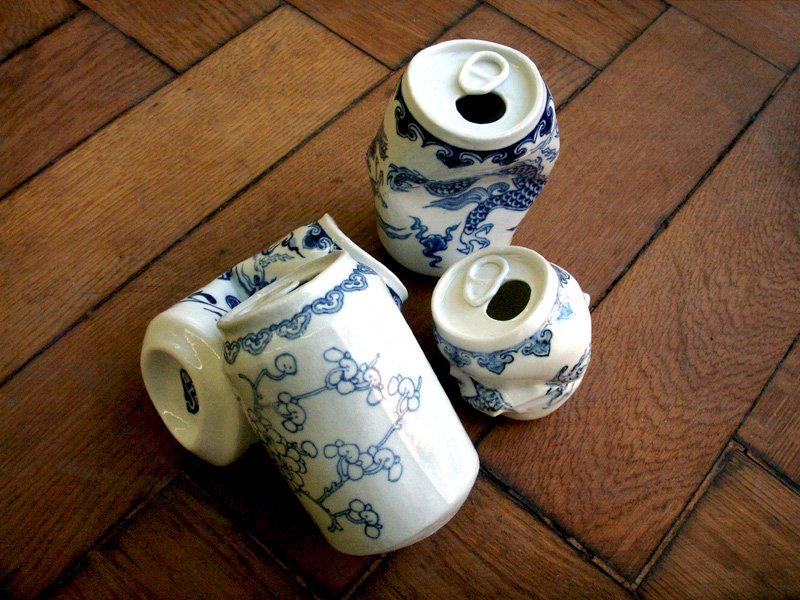The Art: Drinking Tea
The Artist: Lei Xue
About the Artwork:
Littering the floor of the gallery, Chinese artist Lei Xue’s collection of semi-crushed porcelain soft drink cans might, at first, look like any other intricately branded garbage.
Such a reading is likely to lead to an obvious interpretation: Xue’s Drinking Tea is a commentary on our waste-producing habits, one that questions whether we even understand just what we are discarding. Like the orchestral flutist masquerading as a curb-side busker, we only acknowledge and appreciate the cans in their context as an art installation.
Xue’s decision to produce soft drink cans – unarguably one of the most dominant icons of westernisation – would therefore come as no surprise.
Yet underneath this superficial understanding lies Xue’s true intentions.
Regular soft drink cans are made out of aluminium, the second-most widely used metal in the world, and one of the most efficiently recycled materials in production. Aluminium recycling is a zero-waste process that uses only 5% of the energy required to create a new aluminium product. Approximately 75% of the aluminium ever produced is still in use today.
This stands in stark contrast to Xue’s cans, made out of porcelain as they are. The creation of porcelain requires the extensive use of fresh water, which in turn becomes a pollutant when it inevitable returns to the waterways. The manufacturing process also emits dangerous airborne particles, and lead-infused by-products, which are dangerous to both the environment and those working with the material.
Xue is challenging us to question our interpretation of what is dangerous waste. The cans may seem like a problem, but how does their presence compare to the catastrophic damage that porcelain is capable of?
We must find the balance between consumption and conservation. Somewhere between them lies responsibility; the responsibility of the human race to care for the world it is killing.
The good news? A 2010 study (paywall) revealed a way to recycle 80% of the water used in the manufacturing of ceramics, offering hope that this traditional Chinese artistry can continue, sustainably, long into the future.

